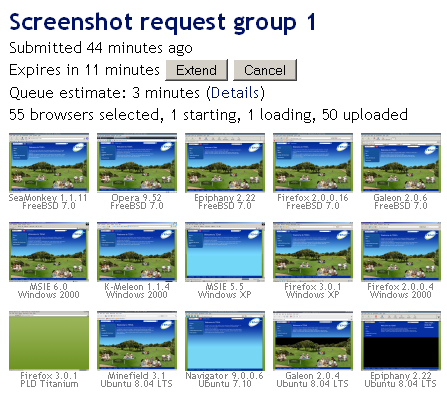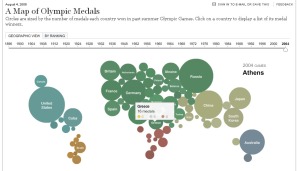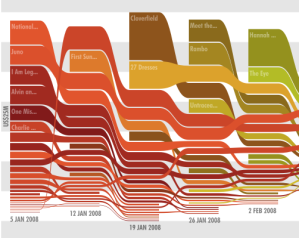Casting the net wider – Building engagement across the web

 Sara Linfoot – Head of Digital Innovation @ The Guardian
Sara Linfoot – Head of Digital Innovation @ The Guardian
Sara’s job is to maximise the Guardian’s revenue through the development of new digital concepts. Here are some key points from the seminar:
1) Understanding user engagement
Guardian divide their users into ‘Casual’ and ‘Committed’ users
‘Casual’ users will come onto the Guardian website through search engines etc. and are not regular visitors. They don’t know much about these users and do not spend much time trying to engage them. ‘Committed’ users engage frequently with the website, leaving comments, entering competitions, etc. They are invaluable to GNM and a lot of research goes into users in this group.
Guardian consider several elements when engaging users
1) Respect users – Don’t be sneaky with CRM etc. Curate online conversations. Ask them for their opinions. Don’t filter negative comments out but learn from them.
2) Give immediate responses – Show you’re listening.
3) To moderate or not? – Only take down conversations if someone flags it as ‘offensive’. Consider how a commercial conversations should be moderated (will there be slander from brand competitors, etc)?
Help users to get involved
Allow them to; comment, tag, share, add, stop, take, skip, save, mash, react, subscribe.
– Guardian got users to upload their pictures and messages for Obama in the lead-up to his inauguration.
– They identify super-users and engage with them, asking them to carry out tasks for them (e.g. give them a camera and ask them to go down to G20 protests and report back etc). This really utilises citizen journalism.
Engagement is hard to measure
When it comes to measuring the success of Guardian communities, it is important not to focus on classic metrics but to focus on measuring engagement/influence. Some companies claim to be able to do this but the Guardian believe these techniques are too long and complicated and the area is yet to be properly understood.
2) How GNM (Guardian News & Media) is embracing content distribution
Guardian’s open-platform allows users access to Guardians content and data sets, which they can integrate with other internet applications.
Examples:
– One person used Guardian’s data on MP expense claims + mashed them up with Google maps, showing where in the country different claim amount were being shown.
– Another person used Guardian’s computer game reviews and mashed them with Youtube videos of those games.
3) Maxising amplification beyond GNM channels
Guardian currently engage with users through;
User-generated content, Audio, Video, Mobile, PDA, Magazines, Online, Events, Emails, RSS and downloadable PDFs (G24) and traditional newspapers (which are still central to the Guardian business model as they can me more in depth and people still like the experience of reading them. Now though the traditional journalists are more integrated with the online journalists and sit together).
In the future they also intend to diversify into other platforms
This includes Twitter and other social media. The future of GNM is focussed on engaing users outside the Guardian channels. The aim is to provide content to users wherever they might want to consume it. The more online communities they can tap into the the better. They will communicate with people using a combination of Text, Multimedia, Data (including data visualisation) and Community.
Old and new communication models need to be integrated
Before the Internet the Guardian was a broadcaster and it’s readers consumed its messages. In early Web people started to communicate in small clusters (in forums etc). Now with the wide range of social media available, the everyone including the Guardian is interconnected. The old models are still important though and need to work with each other to be most effective.
EuroIA 2008: Adam Greenfield (keynote)
 EuroIA 2008 kicked off with a keynote speech from Adam Greenfield of the Nokia Service User Interface Design (SUID) team. In his speech he outlined his perceptions of Information Architecture as a practice and community and how it has missed some key opportunities to move away from endlessly designing for the Internet and branch out further into ubiquiteous media projects.
EuroIA 2008 kicked off with a keynote speech from Adam Greenfield of the Nokia Service User Interface Design (SUID) team. In his speech he outlined his perceptions of Information Architecture as a practice and community and how it has missed some key opportunities to move away from endlessly designing for the Internet and branch out further into ubiquiteous media projects.
This appealed to me greatly as I have only been working in User Experience for just under a year and already find working on endless web projects frustrating.
However. I felt that his talk failed to offer any conclusions to the problem he outlined. Of course it is up to the whole community to make things happen but I would have liked to hear his ideas on how the practice should move forward, instead of merely stating that it isn’t. Otherwise, this talk got me thinking as I’m sure it did others.
Euro IA 2008
 Last weekend the DLKW User Experience department flew out to Amsterdam to attend this year’s EuroIA conference. It all went down at the Tuschinski theatre in the centre of town, which was is a strange, haunting place and a damn nice place to spend 2 days.
Last weekend the DLKW User Experience department flew out to Amsterdam to attend this year’s EuroIA conference. It all went down at the Tuschinski theatre in the centre of town, which was is a strange, haunting place and a damn nice place to spend 2 days.
Amsterdam its self is a fantastic place. Everybody is really laid back and the girls are amazing. We stayed on a house boat on the Amstel, where we held a lil’ drinks party for some of the other IAs at the conference. Met some really interesting people at the conference and really got a feel for the IA community (Hello to all of you).
All in all a brilliant few days. Next year is in Copenhagen so keep your eyes out for that. I will be putting up some notes on some of the speakers soon so watch this space.
Free online browser testing
Interesting online browser test. Browsershots test your page against dozens of (unknown) browsers and OS and gives you a screengrab of your website in each browser. Quite handy and free.
Some olympic news websites
One more post about the Beijing Olympic games! Since the games are happening at late (and early) hours I’ve been following the news from different websites but mainly from BBC and Estadao (for Brazilian Olympic news). This morning I was also checking other websites for curiosity. Most of them follow a similar layout pattern with featured articles on top, headlines, number of medals and in some cases multimedia content. I’d like to see more different approaches for this subject… I’ll try to find some more and update this post later. Suggestions are welcome!
Official Beijing website
en.beijing2008.cn/
BBC Olympics
www.bbc.co.uk/olympics/
Yahoo Sports
http://sports.yahoo.com/olympics/beijing (US)
http://au.sports.yahoo.com/olympics/ (Australia)
http://uk.eurosport.yahoo.com/olympics/ (UK)
MSNBC
http://www.msnbc.msn.com/id/24696691/
CBC
http://www.cbc.ca/olympics/
New York Times
http://www.nytimes.com/pages/olympics2008/index.html
Brazilian and Portuguese
http://olimpicos.sapo.pt/
http://ww1.rtp.pt/wportal/sites/tv/pequim2008/
http://www.estadao.com.br/esportes/pequim2008/
http://globoesporte.globo.com/Esportes/Pequim2008/0,,9823,00.html
http://espnbrasil.terra.com.br/pequim08/
Something for the Olympics
Guardian’s Map of Olympic Medals
Somebody at our office sent round this link. It gives a graphical display of all medals won by which county at the Olympics since 1896. Wonderfully done. Really like the arrangement of balls into a world map. Balls.
Aurora: future web UX?
Adaptive Path and Mozilla Labs have launched Aurora Concept Video with their ideas about “one possible future user experience for the Web”.
See below the 1st part:
 Social Media played a large part in the success of the Obama election campaign. Here’s a few notes from an InternetWorld seminar i saw by Leo Ryan from Ryan*MacMillan.
Social Media played a large part in the success of the Obama election campaign. Here’s a few notes from an InternetWorld seminar i saw by Leo Ryan from Ryan*MacMillan.

